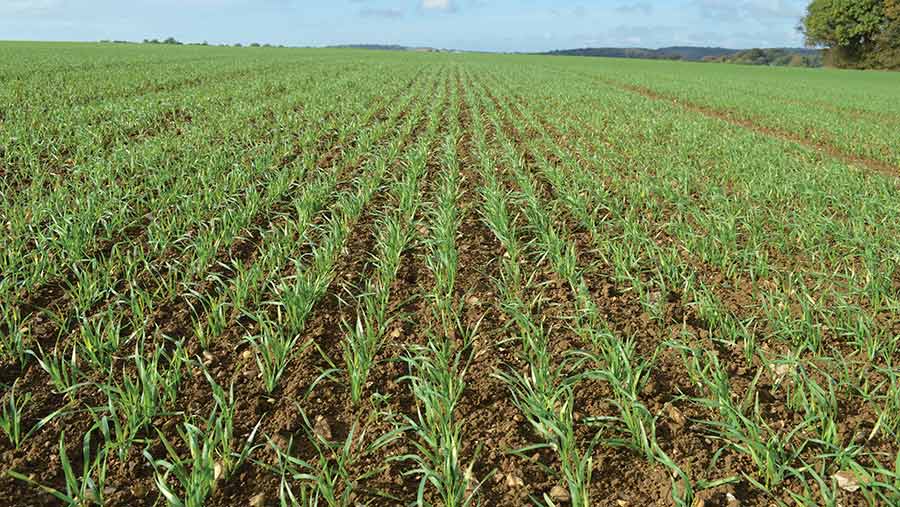Wheat growers try variety blends to cut costs in the West
 © MAG/David Jones
© MAG/David Jones Six winter wheat growers are trying out blends of varieties this season to see if they can reduce fungicide inputs in the more septoria-susceptible west of the country.
The six are all AHDB cereals and oilseeds monitor farm hosts in the west of England and Wales, and are looking to see if lower inputs will boost their profitability.
A mixture of three or more varieties show the greatest potential to reduce disease and combat the risk of the wet weather disease septoria in the more rainy West, says the AHDB.
See also: Can wheat blends raise yields and cut disease control costs?
Variety blend
The six are growing a blend of four wheat varieties – Gleam, Extase, Graham and Skyscraper – for harvest 2021, and will compared their crops with each other and also a field of Graham on their own farms.
Hereford monitor farm host Adam Lewis is one of those trying out the blend, planting 11ha in early October, and he hopes that the mix will help him level out his disease profile while maintaining yield.
“If you have a field of blended varieties, they might be able to bring a characteristic to the party that the others don’t have. It’s about spreading the risk,” he says.
Adam Lewis, Hereford monitor farm host
- Farm name: Hampton Wafre Farm, Leominster
- Varietal mix: Gleam (25%), Extase (25%), Graham (25%) and Skyscraper (25%)
- Drilled: 5 October 2020
- Area planted: 11ha
- Five-year average feed wheat yield: 10.5t/ha
- Rotation of the trial fields: second wheat, wheat after spring oats, wheat after oilseed rape
- Soil types: silty loam, gravel, heavy clay
Mr Lewis adds that farming isn’t about producing the biggest crop or getting it established the best, it seems to be about risk management, and he hopes to end up with a blend that’s genetically suited to his farm.
He is joined by three other Herefordshire growers – Jack Hopkins, Martin Carr and Rob Beaumont – along with Rory Lay from Shropshire and Tom Rees from Pembrokeshire.
The six plan to compare results throughout the growing season, until the final yield results at harvest.
Choice of varieties
AHDB varieties expert Simon Oxley says the four wheats were chosen from the group’s Recommended List, based on disease resistance, maturity, height and yield.
“Height differences should not be too extreme, and the varieties should have complementary resistances for disease, specific weight and straw strength,” he says.
The four varieties all have generally good resistance to septoria, with Gleam scoring 6.3, Extase 8.1, Graham 6.8 and Skyscraper 5.0 in a 1-9 scale – with 9 representing strong resistance and 1 very susceptible.
One of the pitfalls is that end-users are unlikely to accept blends, but this is less of an issue if growers use what they grow as feed on farm. If growers are hoping to sell the grain, they should definitely have a contract in place, he adds.
In addition, Mr Oxley says if farmers save seed to grow next year, what they sow won’t be in the same ratio that they drilled originally, and the dominant variety may not always be the best for the next season.
Emily Pope, AHDB senior knowledge transfer manager, says the blended approach has the potential to reduce disease, improve stability and increase yields, and also therefore reduce risk for wheat growers. “While research has shown that fungicide inputs can be reduced in mixtures, it’s not yet conclusive,” she says.
